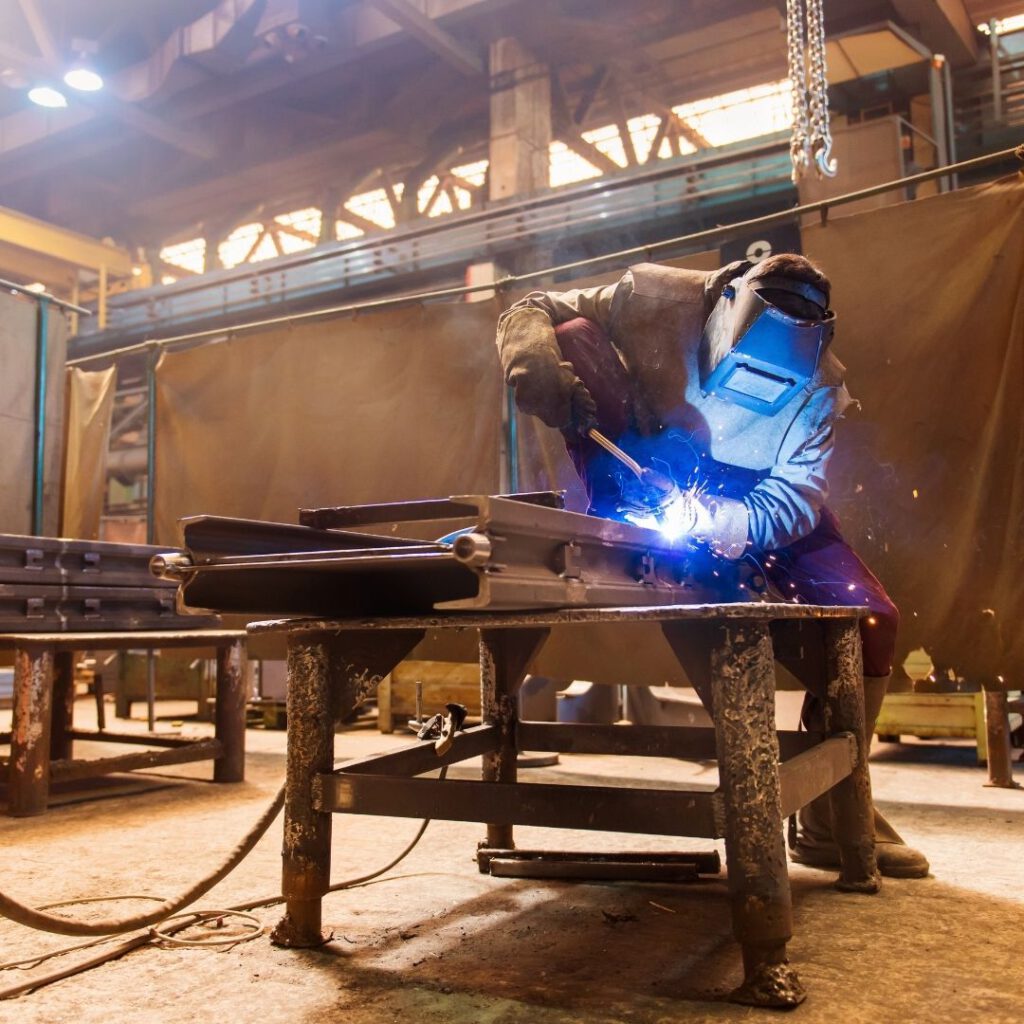Worrying about what might happen if you weld without shielding gas? Here are some answers to common questions.
Introduction
If you weld without shielding gas, your welds are contaminated by the surrounding atmosphere.
This can cause several problems, including porosity, cracking, and loss of strength in your welds. In addition, welding without shielding gas can also lead to increased spatter and weld defects.

What is Shielding Gas?
Shielding gas is an inert or semi-inert gas used to prevent atmospheric contamination of the weld area. Common shielding gases include argon, helium, and carbon dioxide.
Without shielding gas, welding would be impossible as the oxygen in the air would contaminate the weld and cause it to weaken.
Shielding gas also helps to protect the weld from atmospheric contamination during the cooling process.
Why is Shielding Gas Important?
Welding without shielding gas is often called “open welding” and can be extremely dangerous.
The weld pool is unprotected from the atmosphere, which means it can be contaminated by oxygen, nitrogen, and other gases. This can cause the weld to be weak and porous and even lead to explosions.
Shielding gas is used to protect the weld pool from contamination and plays a vital role in ensuring the quality of the weld. Without it, welding would be a much more complex and less reliable process.

What Happens if You Weld Without Shielding Gas?
If you weld without shielding gas, you risk your welds being contaminated by atmospheric gases. This can lead to porosity and other defects in your welds, ultimately weakening them.
In addition, welding without shielding gas can be dangerous, as it exposes you to harmful fumes and gases. So, if you’re going to weld, be sure to use shielding gas!
Welding without shielding gas is not recommended, as it can lead to several problems. Without gas, the weld will be unprotected from the atmosphere, which can cause contamination.
This can lead to a loss of strength and corrosion resistance in the weld. In addition, welding without shielding gas can also cause the formation of unhealthy fumes and gases.
Don’t risk the quality of your welding projects. Discover the consequences of welding without shielding gas and take the necessary steps to ensure a safe and successful outcome. Upgrade now and start experiencing the benefits of professional-grade welding. Click here to find out more.
Steps on How to weld without shielding gas?
If you’re planning on welding without shielding gas, there are a few things you need to keep in mind.
- First, you need to choose the correct electrode. For welding without shielding gas, you’ll need an electrode specifically designed for that purpose.
- Second, you need to make sure that your welding area is well-ventilated. Welding without shielding gas can produce harmful fumes, so it’s essential to have good ventilation in your welding area.
- Finally, you need to know the potential hazards of welding without shielding gas.
- Without gas protection, you’re more likely to be exposed to ultraviolet radiation and other welding-related dangers.

Can Welding Without Shielding Gas Be Avoided?
Welding without shielding gas can be a dangerous and costly mistake. Without the proper shielding, welders are at risk of exposure to harmful fumes and gases.
In addition, welding without shielding gas can cause the weld to be less intense and more susceptible to corrosion.
Pros and Cons of Using Shielding Gas
When it comes to welding, there are a lot of different factors to consider. One of the significant decisions you’ll have to make is whether or not to use a shielding gas.
Here, we’ll look at the pros and cons of shielding gas so you can make an informed decision for your next welding project.
PROS:
- Shielding gas protects the weld from atmospheric contamination, which can lead to porosity and other defects.
- Shielding gas can help improve weld quality and consistency.
- Shielding gas can increase welding speed.
CONS:
- Shielding gas can be expensive.
- Shielding gas cylinders can be heavy and difficult to transport.
- Using shielding gas can require more set-up time than welding without it.
Ultimately, whether or not to use shielding gas is a decision that depends on the individual welding project. Shielding gas is good if you’re looking for the highest quality welds possible.
However, welding without shielding gas may be the way to go if you’re on a budget or working on a smaller project.

What Are the Consequences of Welding Without Shielding Gas?
Welding without shielding gas is a dangerous practice that can lead to several consequences, including:
- Fire and explosions: Welding without shielding gas can create sparks that can easily ignite flammable materials nearby, leading to fire or explosions.
- Toxic fumes: Welding produces harmful fumes that can be deadly if inhaled. When welding without shielding gas, these fumes are even more concentrated and can quickly overwhelm and kill someone exposed to them.
- Poor weld quality: Shielding gas is used to create a clean, strong weld. Without it, the weld will be weak and prone to breakage.
Conclusion
Welding without shielding gas is a dangerous practice that can lead to serious health problems for the welder. Shielding gas protects the weld from contamination and helps to ensure a robust and high-quality weld.
The weld can be susceptible to porosity without shielding gas, weakening the joint’s overall strength.
In addition, welding without shielding gas can also release harmful fumes into the air that the welder and other nearby workers can inhale. For these reasons, it is essential always to use shielding gas when welding.
